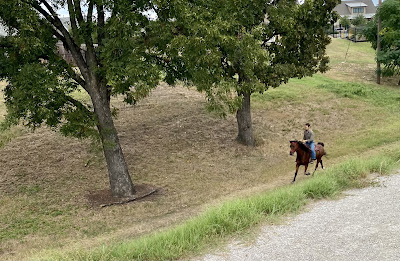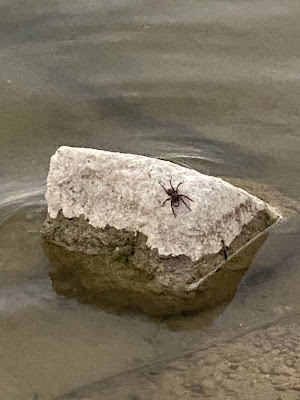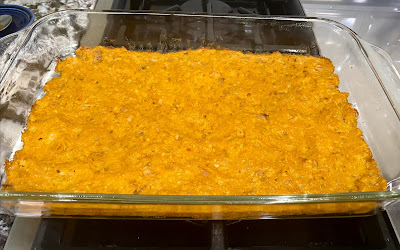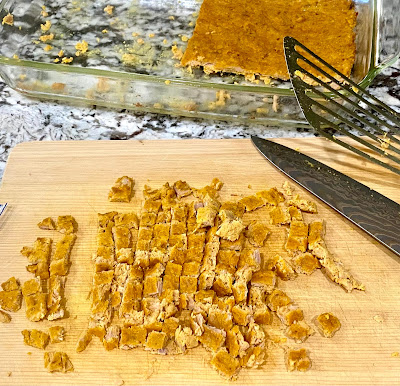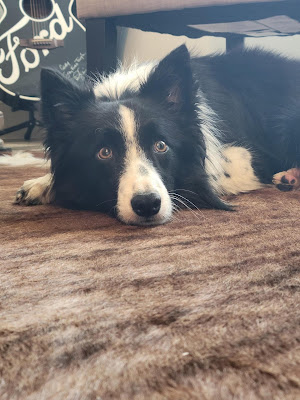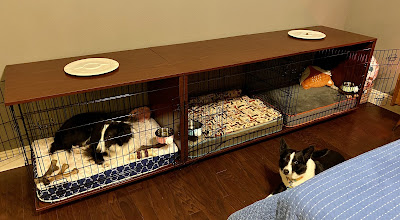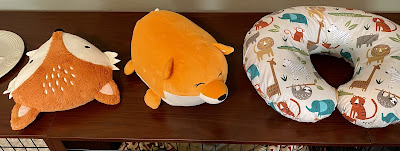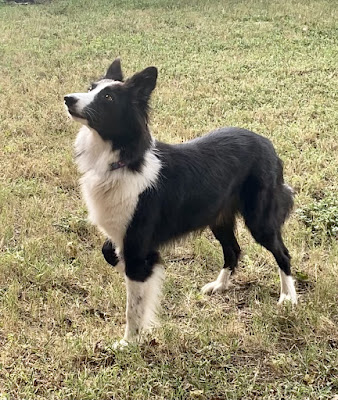Today in basic obedience Jackie was much brighter and ready to work at the beginning of class, and I attribute that to giving her a couple days completely off. The last couple days we’ve done absolutely nothing, other than go for walks and out to play in the yard. No cues given, no expectations to educate, just purely time to either rest or sniff while out playing or walking. My plan forward is to continue with this theme of doing a lot of nothing. Active inactivity.
That said, our homework this week includes sit stay while the handler walks around the dog, loose leash walking, “go to your place” which is lying on a mat, and starting recall. We will continue to practice sit, down, and nose touch a hand target. My plan going forward is to give Jackie a lot more downtime, and a lot less novel experiences and education.
Reader, I’m learning things about dog adoption and Border collies I never even considered before. But isn’t that true learning? With the benefit of seven weeks of hindsight, and as I am beginning to understand Jackie’s personality more each week, Jackie is telling me that she needs to slow down, and have more time.
In a sincere belief that a young Border collie would need lots of activity, brain games, walking and playing, I was prepared to offer all of it when we adopted Jackie into our home. I will never know for sure, but speculation about Jackie’s previous life leads me to consider that in rural Mississippi it’s possible that Jackie didn’t really do much herding, training games, leash walks in novel environments, or maybe much of anything at all. For all I know, Jackie slept under a porch for 20 hours a day, and experienced the exact same environment every day for the other four. Who knows?
Taking into account she was just spayed five months ago, underwent heartworm treatment two months ago, has been in three different rescues across three states, and has changed homes three times just during her most recent tenure in Texas with Border Collie Save, it is important to evaluate a plan forward. Jackie has demonstrated a personality that is capable of and even craves quiet time, and time to observe her environment and continue to get to know her new siblings and family.
Jackie has a very cuddly personality, but she is self reliant in a way some other dogs, such as my current Border collie Gunner and my previous Aussie Roo, are not. Gunner (as was Roo) is definitely a velcro dog, while Jackie is more self confident, though still very outgoing and loving, she is happy to spend quiet time, and is willing to rest her body and brain.
The bonding process, or the process that forges a close relationship, is moving at a much different pace with Jackie than it has with previous dogs. I am continuing to learn her personality, and to give her however much time it takes for us to form a bond. It is becoming clear that Jackie needs more time to rest and decompress between playing games and learning new things.
Jackie is a fast learner, to be sure, but she is clearly letting me know that down time, and time spent sleeping and resting, is necessary for her. She is happy to be active and loves to run, but she is also very happy being indoors on the sofa or bed just being together, or “hanging out” as it were. Which makes her an awesome house pet! Jackie has the potential to make a great agility dog because she loves to run and play, but for now I will continue to allow her the time she needs to regenerate, and allow Jackie to form a deeper bond with me and the rest of her new family.
There is no pressure or timeline, I sincerely continue to have Jackie’s best interest at heart. I am learning anew that every dog is different. This young, athletic Border collie has shown me that while she loves being active, there also has to be plenty of time to decompress and allow us to continue to forge our relationship.
Pearls:
- Our homework this week includes continuing sit, down, and nose touch, and beginning sit stay and down stay while creating distance, “go to your place,” loose leash walking, and recall
- Jackie is her own personality and I am learning to slow down to allow her more time
- What I thought I knew about young, athletic Border collies is changing as I continue to learn, one size does not fit all and I’m grateful for excellent teachers








